Mysteries of Giza and the Pyramids: A Journey Through Time
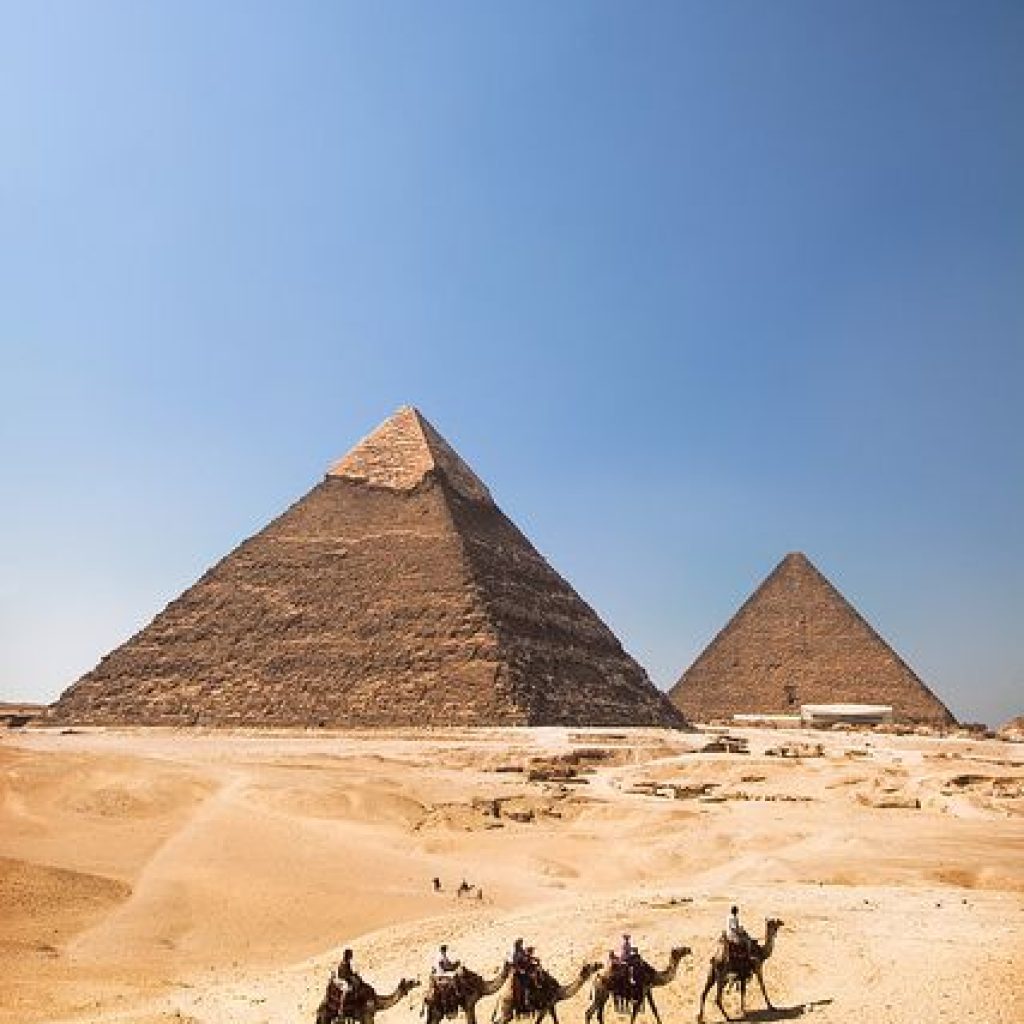
Table of Contents
- Introduction
- The History of Giza
- Giza’s Great Pyramid
- The Pyramid of Khafre
- The Pyramid of Menkaure
- The Sphinx safeguards the plateau.
- The Construction Techniques of the Pyramids
- The Pyramids’ Role in Ancient Egyptian Religion
- Modern Discoveries at Giza
- Tourism at Giza Today
- Conclusion
- FAQs
1. Introduction
Giza and the Pyramids have captivated the imagination of people around the world for millennia. The Giza Plateau, known for its iconic symbols of ancient civilization, is where you can find Giza and the Pyramids, the Sphinx, and many other ancient structures that have remained intact over the years. This article delves into the rich history, architectural marvels, and ongoing mysteries surrounding Giza and the Pyramids.
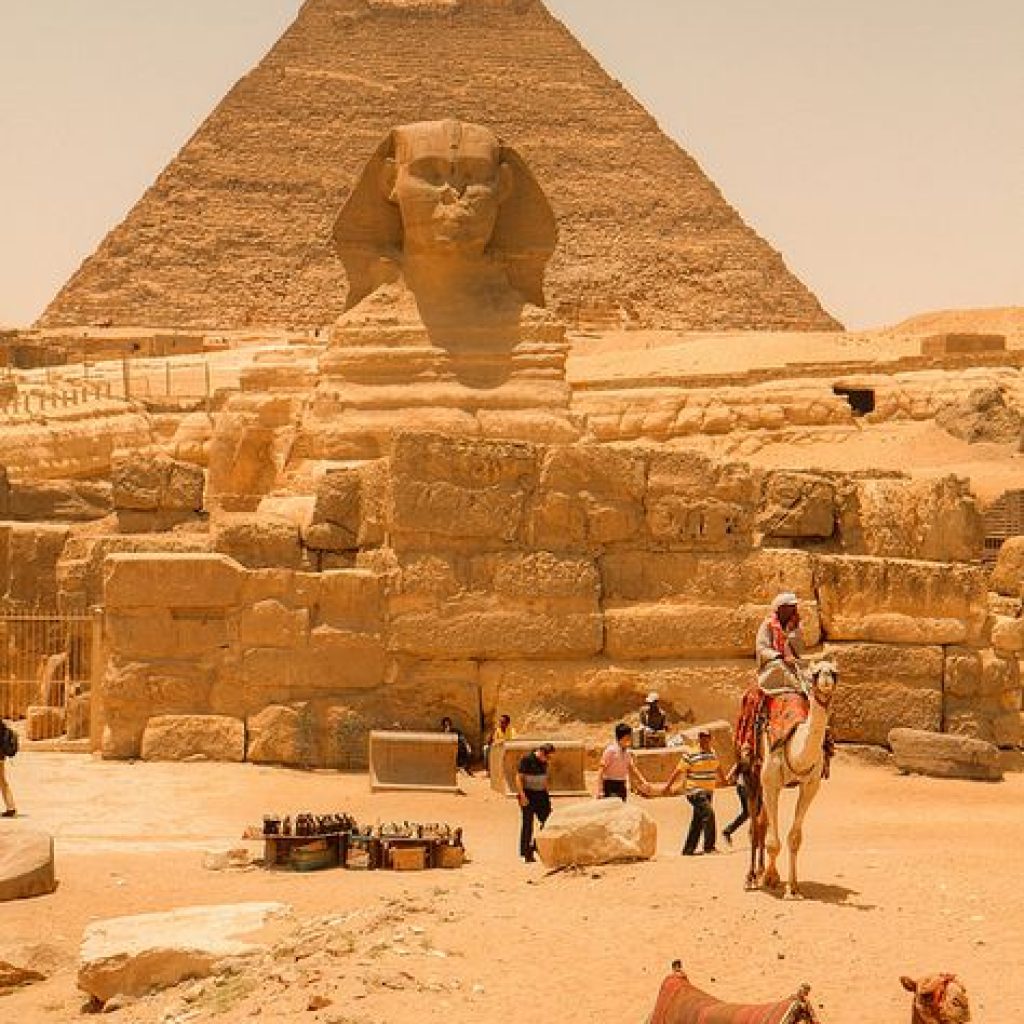
2. The History of Giza
Giza and the Pyramids, has been a significant site in ancient Egyptian history for over 4,500 years. It served as the necropolis for several pharaohs of the Old Kingdom, particularly during the Fourth Dynasty. Giza’s proximity to the Nile River made it a prime location for construction, with easy access to materials and a workforce. The elaborate pyramids and monuments in Giza were constructed as tombs, showcasing the ancient Egyptians’ faith in the afterlife and their admiration for their leaders.
3. Giza’s Great Pyramid
The Great Pyramid of Giza, also called the Pyramid of Khufu, stands as the biggest and most renowned among the trio of pyramids situated on the Giza Plateau. It was constructed during the reign of Pharaoh Khufu around 2580–2560 BCE and originally stood at 146.6 meters in height, equivalent to 481 feet. For more than 3,800 years, the Great Pyramid held the title of being the world’s tallest man-made structure. The precision of its construction, with its alignment to the cardinal points and the exactitude of its measurements, continues to astonish researchers and historians alike Giza and the Pyramids, .
4. The Pyramid of Khafre
The Pyramid of Khafre, the second-largest pyramid at Giza, was built for Pharaoh Khafre, the son of Khufu. It is slightly smaller than the Great Pyramid, standing at 136.4 meters (448 feet) originally, but it appears taller due to its higher elevation on the plateau. The Pyramid of Khafre is unique because it still has some of its original casing stones at the top, providing a glimpse into what all the pyramids might have looked like in their prime. The complex also includes the Great Sphinx of Giza, believed to represent Khafre.
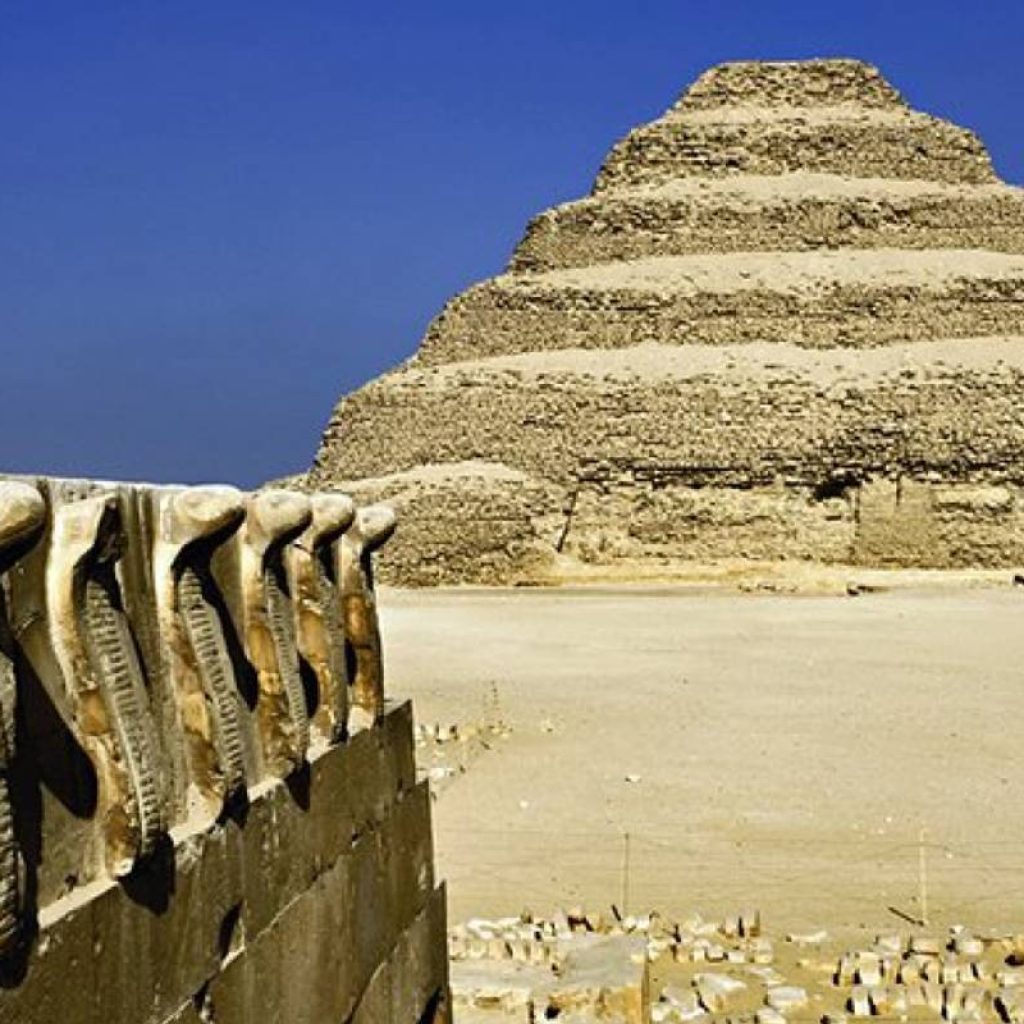
5. The Pyramid of Menkaure
The Pyramid of Menkaure, the smallest of the three main pyramids, was built for Pharaoh Menkaure, Khafre’s successor. Standing at 65 meters (213 feet) tall, it is less imposing than its neighbors but is still a marvel of engineering. Menkaure’s pyramid is distinguished by its complex, which includes three smaller pyramids often referred to as the “Queens’ Pyramids,” as well as a mortuary temple and valley temple. The Pyramid of Menkaure reflects a shift in construction techniques and religious practices from the earlier pyramids.
6.The Sphinx safeguards the plateau.
A massive limestone statue, the Great Sphinx of Giza, combines a lion’s body with a pharaoh’s head as it watches over the surroundings close to the Pyramid of Khafre. The Sphinx ranks among the world’s most massive and ancient statues, spanning 73meters (240 feet) in length and rising 20 meters (66 feet) in height. The identity of the Sphinx’s face is still debated, but it is commonly believed to represent Pharaoh Khafre. The Sphinx symbolizes mystery and power due to its enigmatic expression and the numerous surrounding legends Giza and the Pyramids .
7. The Construction Techniques of the Pyramids
The construction of the pyramids remains one of the greatest engineering feats in human history. Theories about how the ancient Egyptians built the pyramids range from the use of massive ramps and levers to more complex systems involving water or other tools. The precise methods used to quarry, transport, and assemble the millions of limestone and granite blocks are still a subject of debate and research. Modern studies suggest a combination of skilled labor, advanced knowledge of mathematics and astronomy, and the organization of a large workforce contributed to the successful construction of these monumental structures.
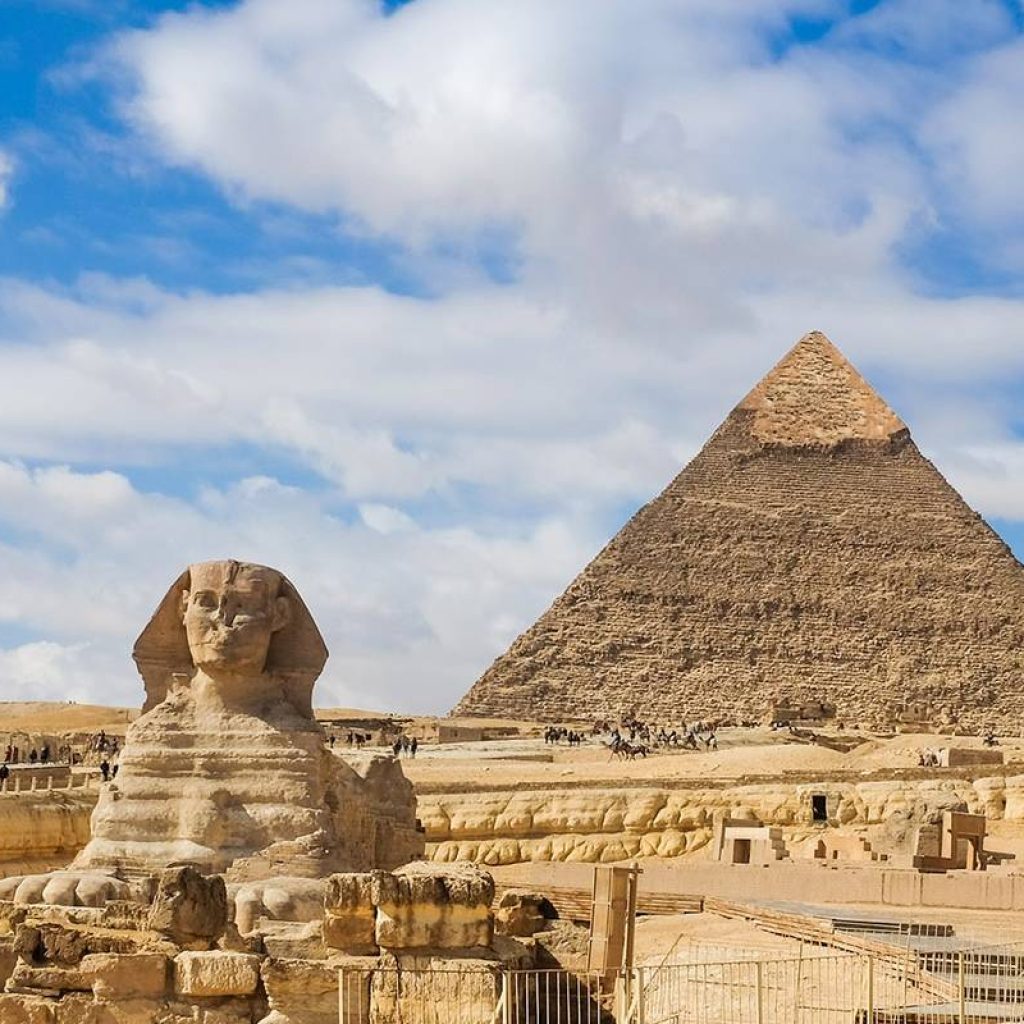
8. The Pyramids’ Role in Ancient Egyptian Religion
The pyramids were not merely tombs; they were integral to ancient Egyptian religion and cosmology. The Egyptians believed that the pyramid served as a bridge between the earthly realm and the divine, allowing the pharaoh’s soul to ascend to the afterlife. The shape of the pyramid was symbolic, representing the rays of the sun, and the positioning of the structures was designed to align with specific stars and celestial events. The elaborate burial practices, including the placement of goods, inscriptions, and statues within the pyramids, reflected the Egyptians’ belief in an afterlife where the pharaoh would continue to rule.
9. Modern Discoveries at Giza
Despite being studied for centuries, the Giza Plateau continues to reveal new secrets. Modern archaeological methods, including advanced imaging techniques and drone surveys, have led to significant discoveries in recent years. Hidden chambers within the Great Pyramid, new tombs, and artifacts have been uncovered, offering fresh insights into the lives of the ancient Egyptians. Ongoing excavations and research aim to better understand the construction techniques, the daily lives of the workers, and the religious significance of the pyramids and surrounding structures.
10. Tourism at Giza Today
Today, Giza and the Pyramids are among the most visited tourist destinations in the world. Millions of tourists visit the location annually to admire the magnificenceof the pyramids and delve into the fascinating history of ancient Egypt.The Egyptian government and international organizations have made efforts to preserve and protect the site from the impacts of tourism, environmental factors, and urban encroachment. Guided tours, museum exhibitions, and educational programs offer visitors a chance to experience the awe of Giza and the Pyramids while learning about their historical and cultural significance.
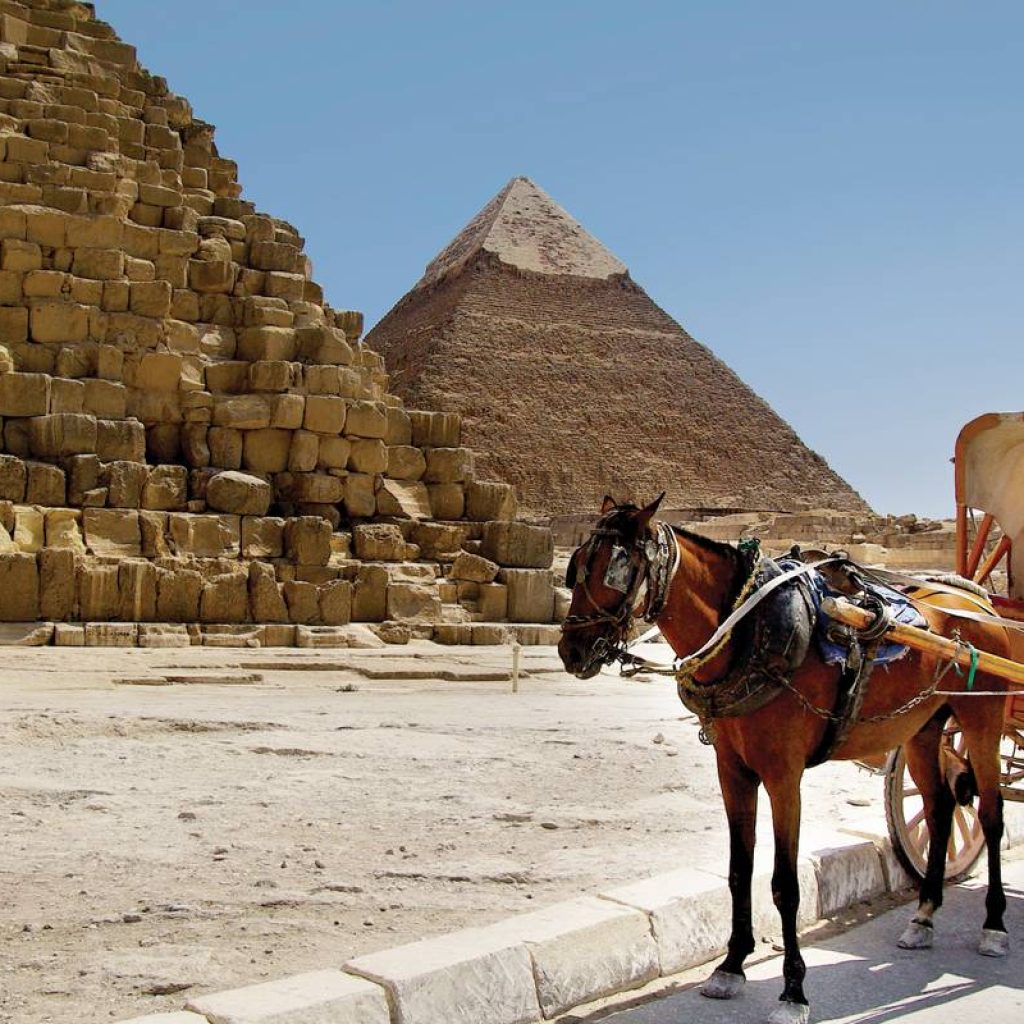
11. Conclusion
Giza and the Pyramids stand as enduring symbols of ancient Egypt’s ingenuity, power, and spirituality. These monumental structures have fascinated people for centuries and continue to inspire awe and wonder. As modern technology allows us to uncover more about the past, Giza and the Pyramids, will undoubtedly remain a focal point for historians, archaeologists, and tourists alike. The mysteries of Giza are far from fully unraveled, ensuring that these ancient wonders will continue to captivate future generations.
12. FAQs
1. What is the significance of Giza and the Pyramids?
Giza and the Pyramids are significant as they represent one of the greatest achievements of ancient Egyptian civilization, serving as tombs for pharaohs and reflecting the Egyptians’ beliefs in the afterlife.
2.Pyramids of Giza’s age?
The Pyramids of Giza, constructed in the Fourth Dynasty of the Old Kingdom, approximately between 2580 and 2560 BCE, are now more than 46, 500 years old.
3.The Pyramids of Giza were constructed by whom?
Skilled laborers and workers, guided by Pharaohs Khufu, Khafre, and Menkaure during the Fourth Dynasty, constructed the pyramids.
4. What mysteries surround the Pyramids of Giza?
Mysteries include the exact construction techniques used, the purpose of hidden chambers, and the alignment of the pyramids with celestial bodies.
5. Is it possible to explore the interior of the pyramids?
Visitors are allowed entry into the Great Pyramid of Khufu and thePyramid of Khafre, but access is restricted to protect these historical monuments.
6.What significance does the Great Sphinx of Giza hold?
Constructed from limestone, the Great Sphinx combines a lion’s body withthe head of Pharaoh Khafre, showcasing a unique blend of regal symbolism.
7. Why are the pyramids important to Egyptian religion?
The pyramids were considered the gateway to the afterlife for the pharaohs, symbolizing their ascent to join the gods and ensuring their eternal rule.





Comment (0)